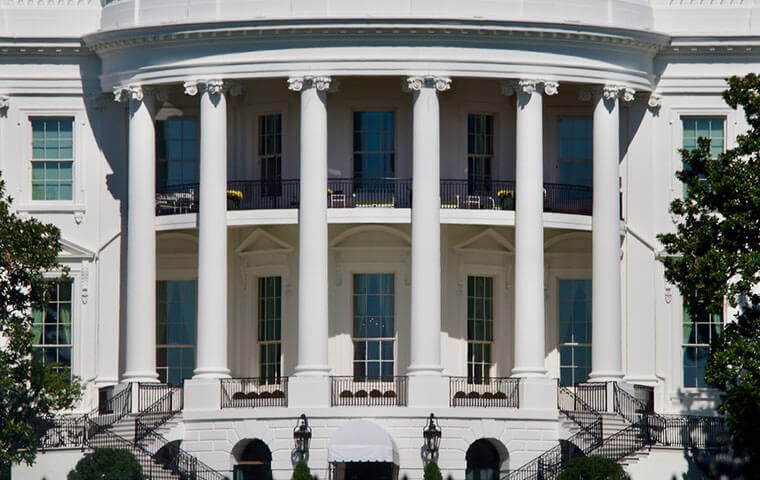 The directive exempts positions within the Executive Office of the President, non-career political appointments, certain senior or excepted service positions, and roles directly tied to defense and public safety. OPM retains authority to grant additional exemptions where required by law. Image: Marcel Hamonic/Shutterstock.com
By: FEDweek Staff
The directive exempts positions within the Executive Office of the President, non-career political appointments, certain senior or excepted service positions, and roles directly tied to defense and public safety. OPM retains authority to grant additional exemptions where required by law. Image: Marcel Hamonic/Shutterstock.com
By: FEDweek StaffPresident Trump has signed an executive order requiring executive agencies to create a strategic hiring committee tasked with reviewing and approving all hiring actions.
The policy applies government-wide, with exceptions for national security, immigration enforcement, public safety, and other positions deemed essential by agency heads or OPM.
Within 60 days, agencies must submit an annual staffing plan to OPM and OMB, outlining their workforce needs and identifying duplicative or low-value positions for elimination. Agencies will be required to update these plans quarterly to track progress and coordinate with OPM and OMB on any adjustments.
The directive exempts positions within the Executive Office of the President, non-career political appointments, certain senior or excepted service positions, and roles directly tied to defense and public safety. OPM retains authority to grant additional exemptions where required by law.
The order also bars the use of federal contracting to bypass the hiring restrictions and directs that Social Security, Medicare, and veterans’ benefits operations remain unaffected.
Within 180 days, OPM and OMB must submit a joint report to the President assessing implementation of the policy and recommending whether it should be modified or continued.
The administration has described the initiative as part of a broader effort to “optimize” the federal workforce and ensure hiring decisions support the administration’s policy agenda and cost-efficiency goals.
The new federal application process announced earlier in the year introduced a new 2-page resume requirement, skills-based rather than education based hiring (a rare point of agreement with the Biden administration), a phase-out of occupational questionnaires, and the addition of four “optional” short-answer essay questions, including one about the applicant’s favorite executive order they would like to support.
Large Share of Federal Workforce about to Experience a Payless Pay Period
OPM Details Coverage Changes, Plan Dropouts for FEHB/PSHB in 2026
OMB Says Federal Workforce RIFs are Starting as Shutdown Drags On
Financial Impact of Shutdown Starts to Hit Home; WH Threatens No Back Pay
Surge of Retirement Applications Is in the Pipeline, Says OPM
See also,
TSP Takes Step toward Upcoming In-Plan Roth Conversions
5 Steps to Protect Your Federal Job During the Shutdown
Over 30K TSP Accounts Have Crossed the Million Mark in 2025
The Best Ages for Federal Employees to Retire

